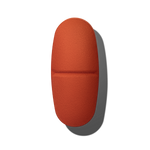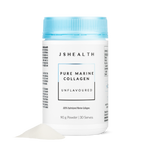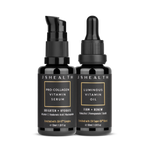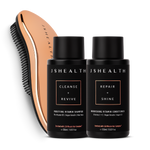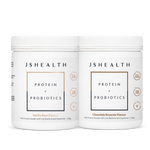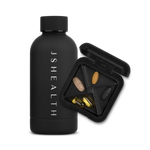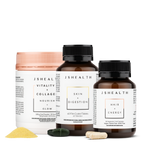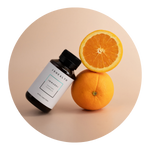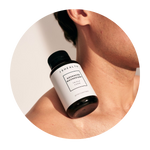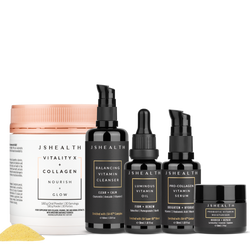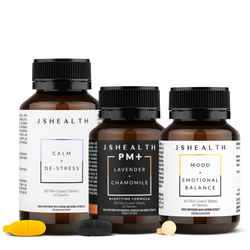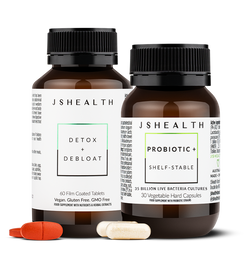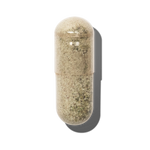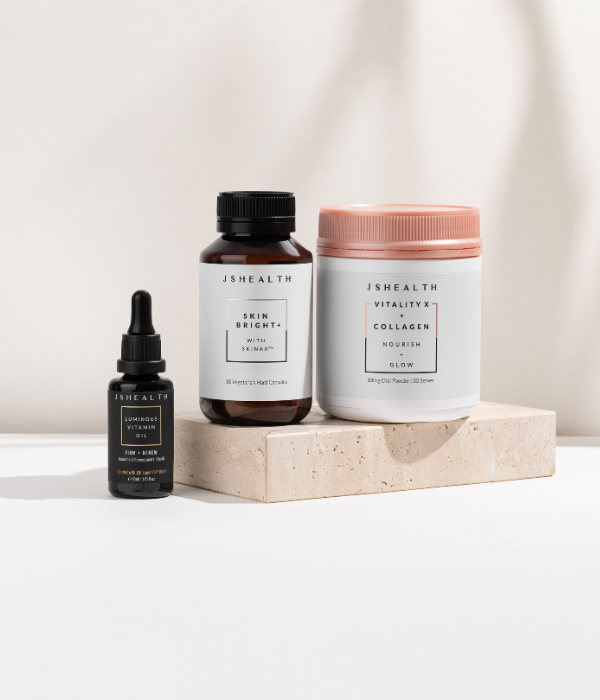How to choose a quality protein powder
How to choose a quality protein powder
With the rise in popularity of protein powders, it can be overwhelming when choosing one that’s right for you. We thought we’d break it down into bite-sized pieces of information to help clarify some common questions about protein and protein powder, plus how to find your perfect protein match!
Do you need it?
We love protein powder for its ease and convenience. It’s an efficient, versatile (and delicious!) way to get protein into your diet. It’s especially great for those who are short for time, struggle to consume adequate protein or want to stimulate muscle protein synthesis.
While a protein powder can be a great supplement, we do always encourage focusing on wholefood sources of protein first and foremost! When you eat protein from wholefood sources, you get the added benefits of other nutrients and minerals. Plant-based protein sources are also rich in fibre, which is important for good gut health.
There are so many delicious sources of animal and plant-based proteins (with the added bonus that they contain iron as well). Animal sources include: meat and poultry (organic and grass-fed when possible), fish, eggs and dairy products. Plant-based sources include legumes (beans, lentils, peas, chickpeas), quinoa, tempeh, edamame, nuts and seeds.
How much protein do you need?
How much protein you need per day is very individual, so it’s important to do what works for you personally. How much you need is based on factors such as activity level, age, gender, the rest of your diet composition and how you digest and utilise protein. This means that the amount can fluctuate during different life stages, or even week to week!
The recommended dietary allowance for protein suggests that individuals should focus on getting at least 0.8g of protein per kilogram of body weight per day. Again, this may increase depending on the above variables e.g. a dietary intake of 1.0-1.6g of protein per kg of body weight per day is recommended for those participating in minimal to intense activity, respectively. Bottom line: adapt your protein intake to your body and lifestyle needs.
Different types of protein powder:
Protein powders generally fall into either whey or plant-based categories.
Whey Protein
Whey protein is isolated from milk and therefore does contain a small amount of lactose. Whey protein contains all 20 amino acids, including the 9 essential amino acids and is digested quickly by the body (ideal for those looking to stimulate muscle growth).
Whey Protein Concentrate (WPC): Rich in protein and amino acids, with small amounts of carbohydrates and fats.
Whey Protein Isolate (WPI): Has undergone another process which further isolates the protein content and is therefore slightly higher in protein. WPI is also generally lower in lactose than WPC with some WPI protein blends reporting to be 99.99% lactose-free.
Plant-based protein powder alternatives (e.g. pea, brown rice or hemp protein)
These are all vegan friendly and will therefore be more suitable for those who are sensitive to lactose.
Pea protein is often made from split peas and is generally lower in carbohydrate content when compared to brown rice protein powder. Hemp protein powder is relatively new to the market but has the added benefit of containing omega-3 fatty acids. Plant-based protein powders generally contain more fibre. Choosing a protein powder that works for you personally can involve some trial and error.
It is important to consider that plant-based protein powders don’t always contain all the essential amino acids, this is why pea and brown rice are often paired together in certain protein blends. The amino acid profile also varies greatly from brand to brand, which is why choosing a high quality plant-based protein powder is important. However, if you are consuming other dietary sources of protein on a regular basis, then this is less of a concern.
JSHealth Protein + Probiotics is an easily-digestible protein powder, with the added benefit of probiotics for a healthy gut.
What to look for when purchasing protein powder?
The ingredient list:
Avoid using products that contain artificial sweeteners, sugar alcohols, preservatives, thickeners, emulsifiers, caffeine and added sugars.
Nutritional Panel:
Protein per serve: 20-30g
Sugar per serve: Less than 5g
How to use it?
You can add protein powder to your overnight oats, bircher muesli, chia puddings, smoothies, homemade bliss balls or protein bars. Whether you need the additional protein from protein powder is very dependent on you personally, your energy needs and so on. Also, depending on your protein needs you can also opt to only include half a serve e.g. if having a bowl of oats with milk and nut butter, you will already be ingesting sources of dietary protein so a full serve of protein may be unnecessary.
References
- Phillips S, Fulgoni V, Heaney R, Nicklas T, Slavin J, Weaver C. Commonly consumed protein foods contribute to nutrient intake, diet quality, and nutrient adequacy. The American Journal of Clinical Nutrition. 2015;101(6):1346S-1352S.
- Wu G. Dietary protein intake and human health. Food & Function. 2016;7(3):1251-1265.
- Gorissen S, Crombag J, Senden J, Waterval W, Bierau J, Verdijk L et al. Protein content and amino acid composition of commercially available plant-based protein isolates. Amino Acids. 2018;50(12):1685-1695.
- Hoffman J. 2004. Protein – Which is Best?. 2019;3(3):118-130.
- Krefting J. The Appeal of Pea Protein. Journal of Renal Nutrition. 2017;27(5):e31-e33.

